Abstract
Performance and hormones were determined in eight middle- and nine long-distance runners after an increase in training volume (ITV, February 1989) or intensity (ITI, February 1990). Seven runners participated in both studies. The objective was to cause an overtraining syndrome. The mean training volume of 85.9 km week-1 increased within 3 weeks to 176.6 km week-1 during ITV and 96-98% of training volume was performed as long-distance runs at mean(s.d.) 67(8)% of maximum capacity. Speed endurance, high-speed and interval runs averaging 9 km week-1 increased within 3 weeks to 22.7 km during ITI, and the total volume increased from 61.6 to 84.7 km. A plateau in endurance performance and decrease in maximum performance occurred during ITV, probably due to overtraining, with performance incompetence over months. Nocturnal catecholamine excretion decreased markedly (47-53%), contrary to exercise-related plasma catecholamine responses, which increased. Resting and exercise-related cortisol and aldosterone levels decreased. Improvement in endurance and maximum performance occurred during ITI indicating a failure to cause an overtraining syndrome in ITI. Decrease in noctural catecholamine excretion was clearly lower (9-26%), exercise-related catecholamine responses showed a significant decrease, cortisol and aldosterone levels remained almost constant, exercise-related prolactin levels decreased slightly. There were no differences in insulin, C-peptide, free testosterone, somatotropic hormone (STH), follicle stimulating hormone (FSH), luteinizing hormone (LH), thyroid stimulating hormone (TSH), tri-iodothyronine (T3) and thyroxine (T4). The decrease in nocturnal catecholamine excretion during ITV might indicate a decrease in intrinsic sympathetic activity in exhausted sportsmen. But it remains open whether this reflected a central nervous system incompetence.
Full text
PDF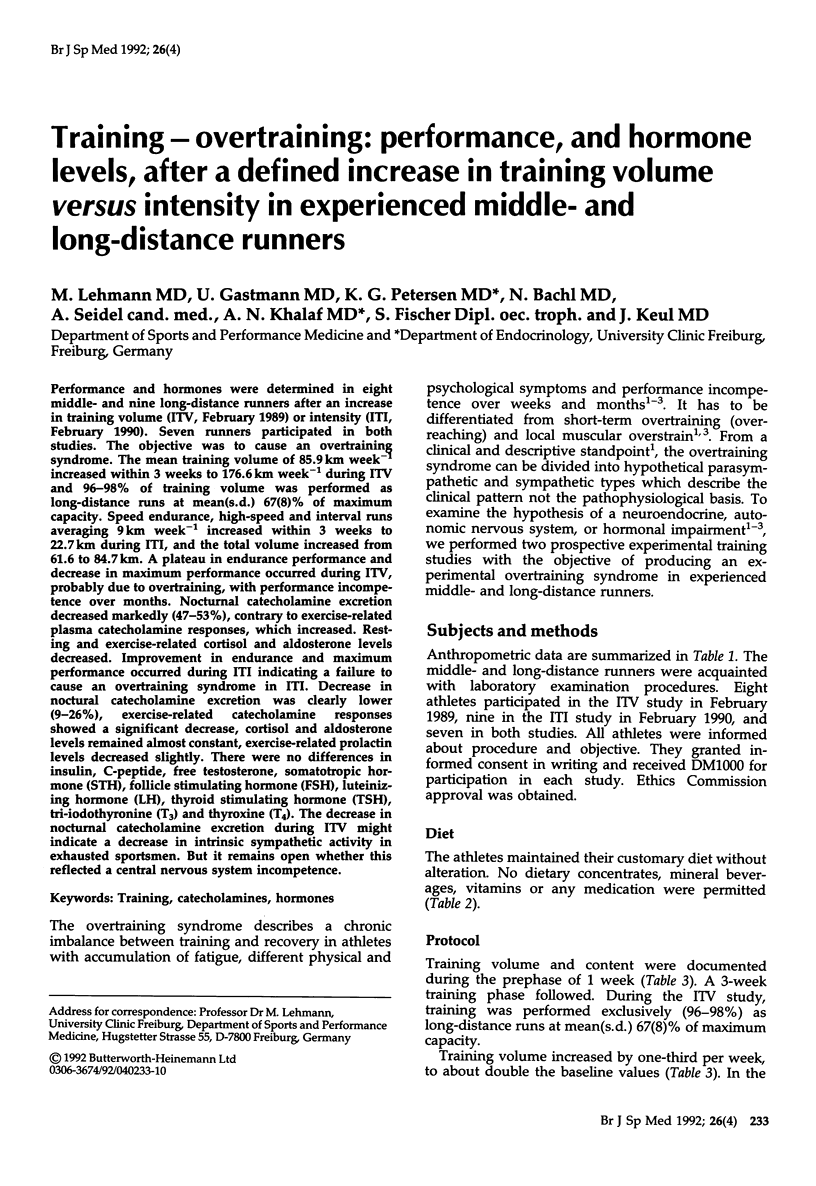
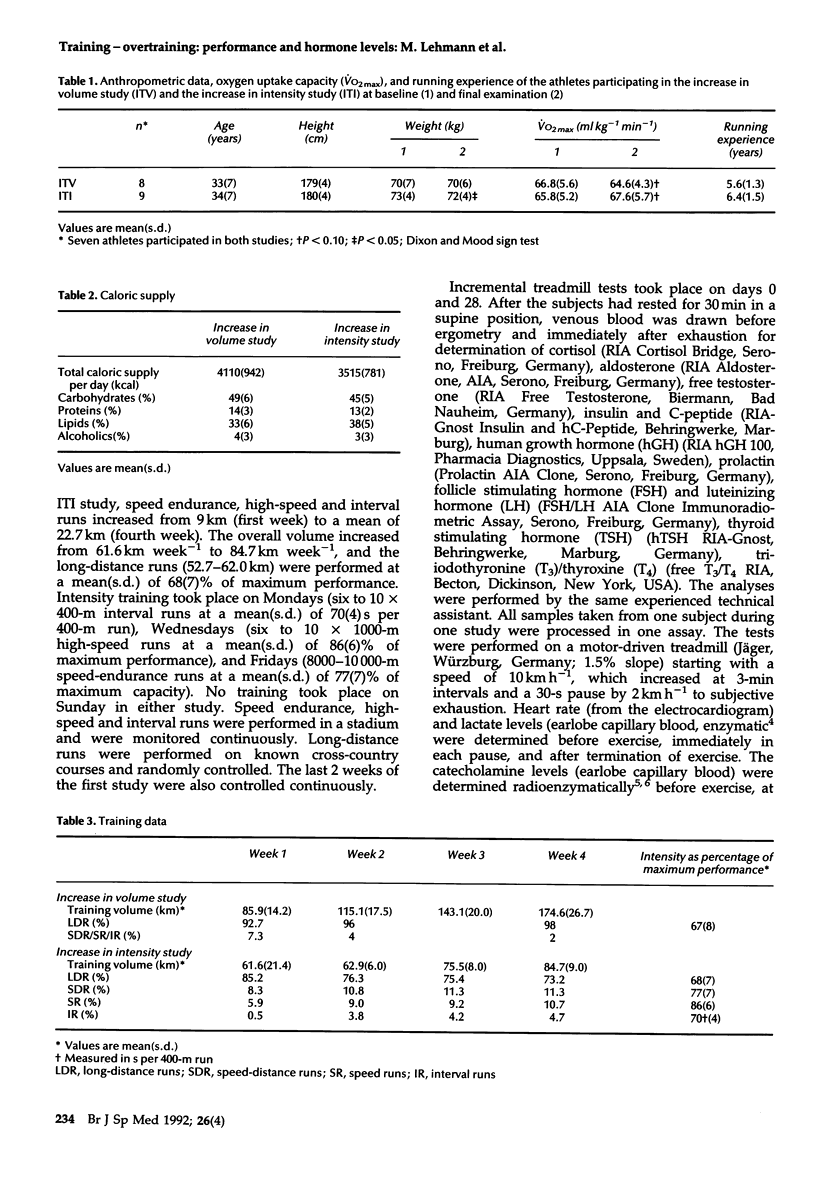
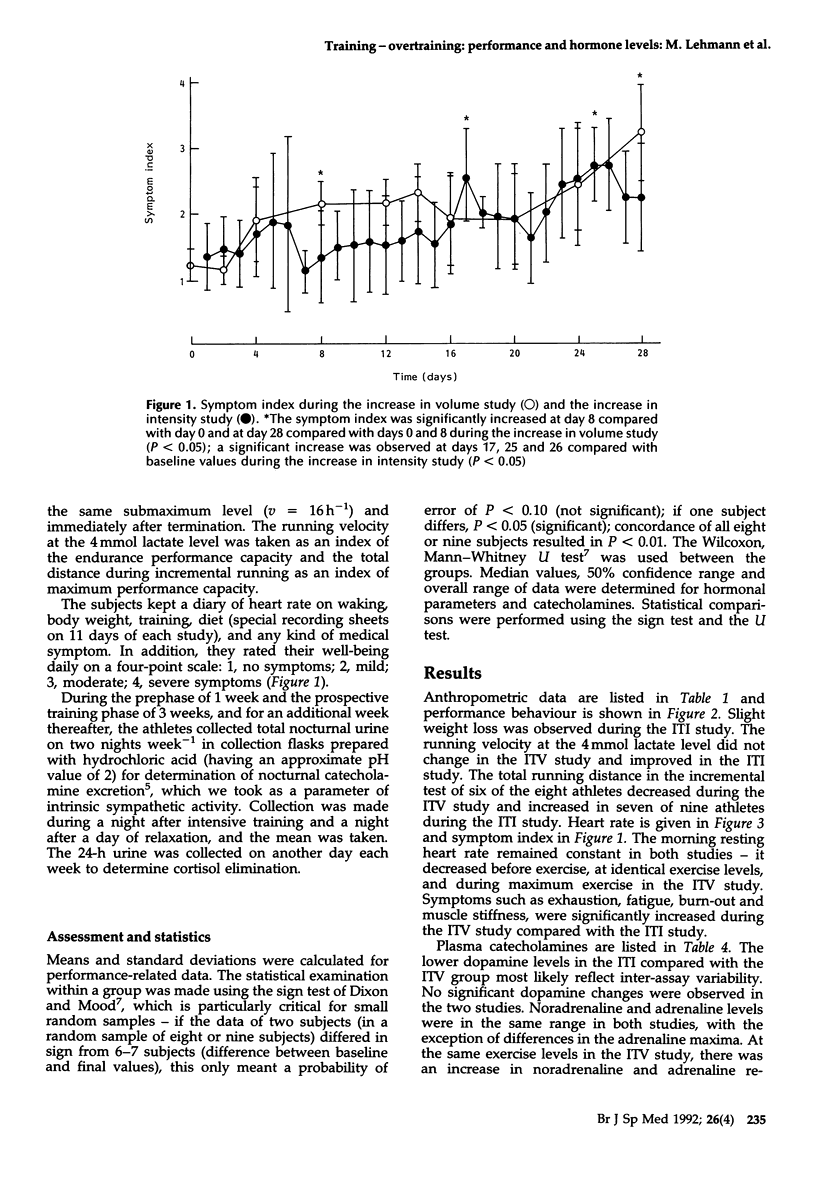
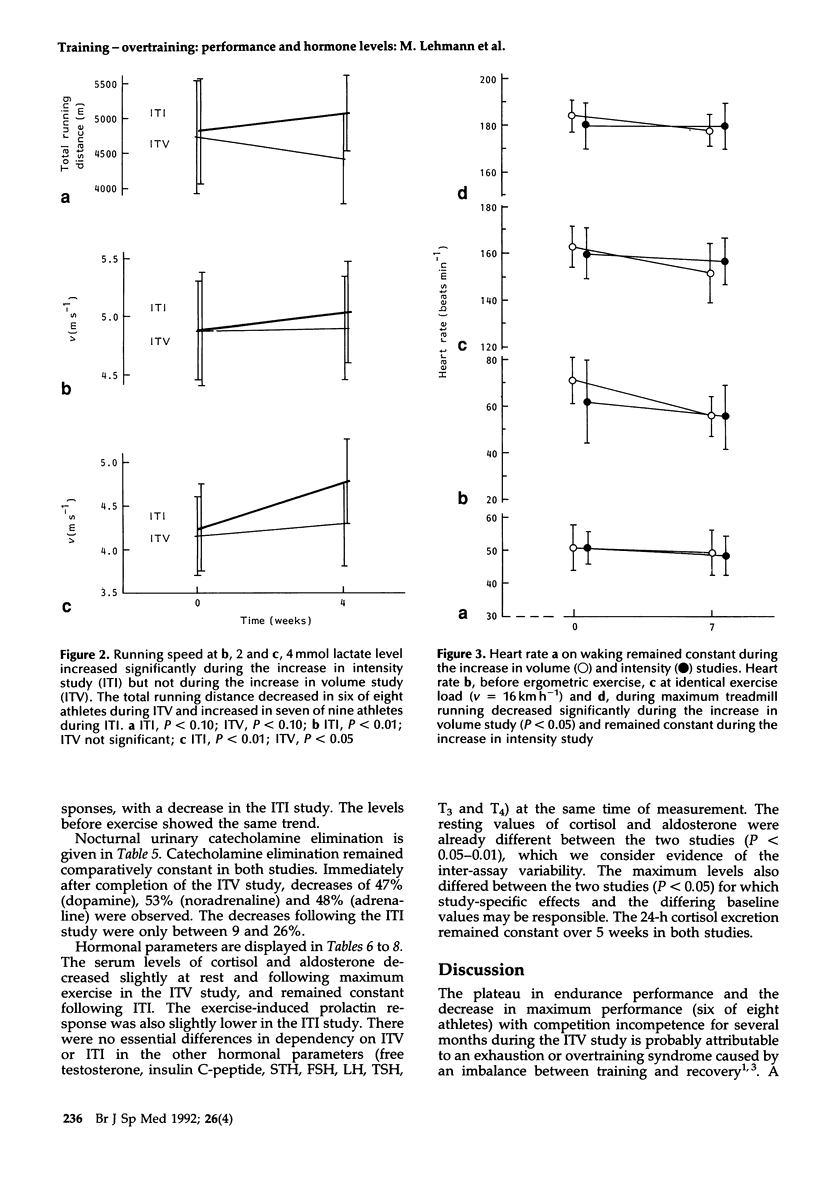
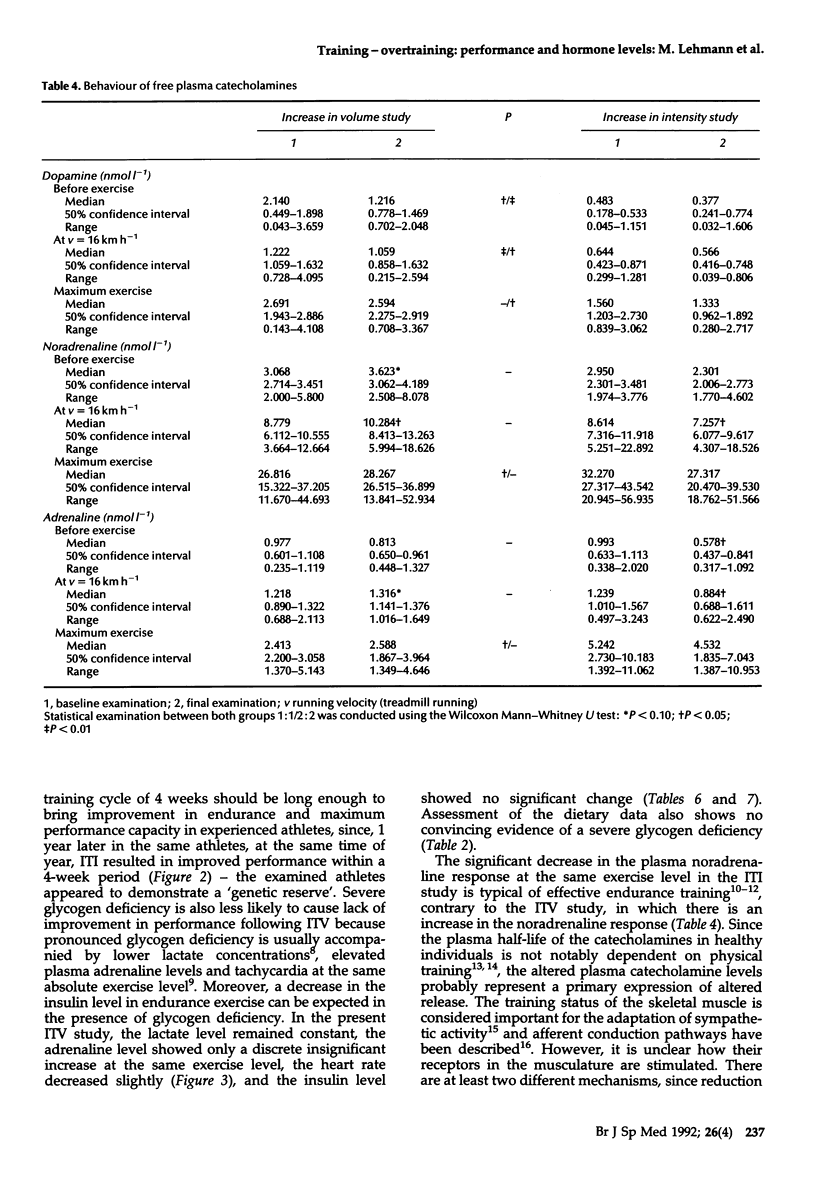
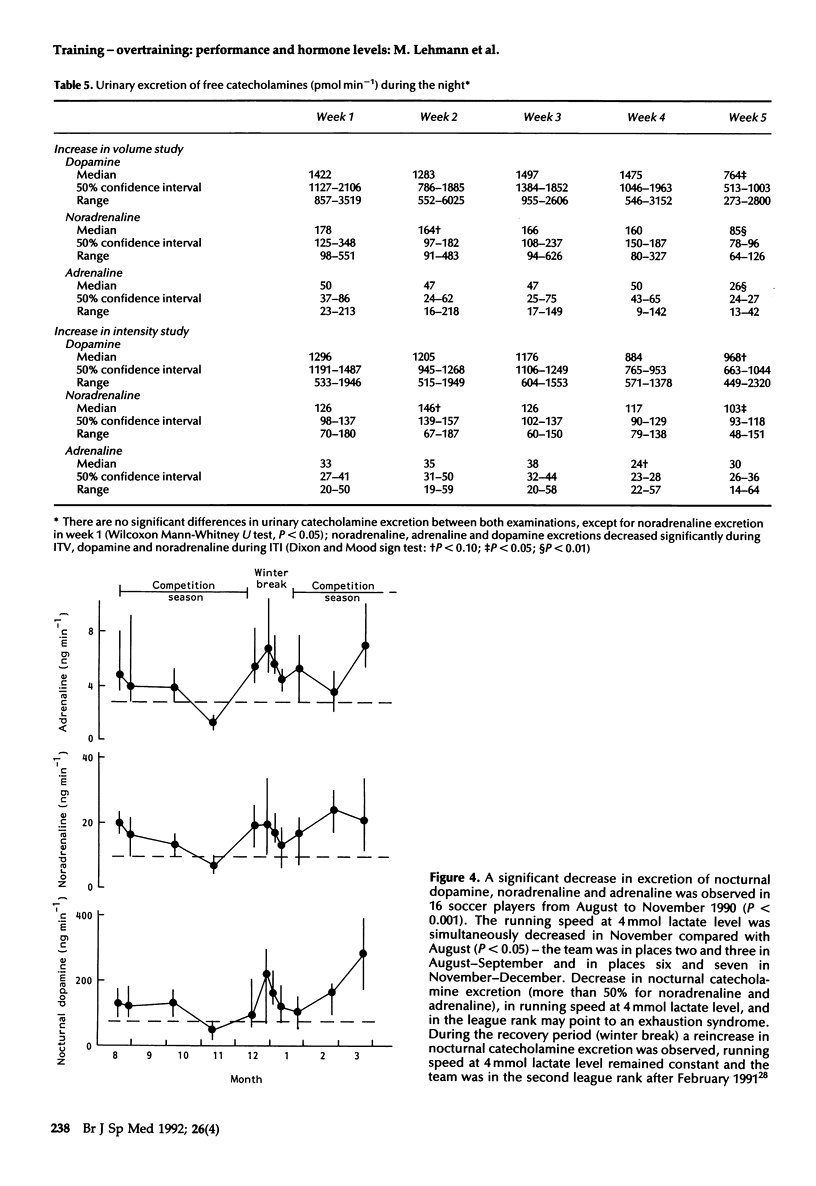
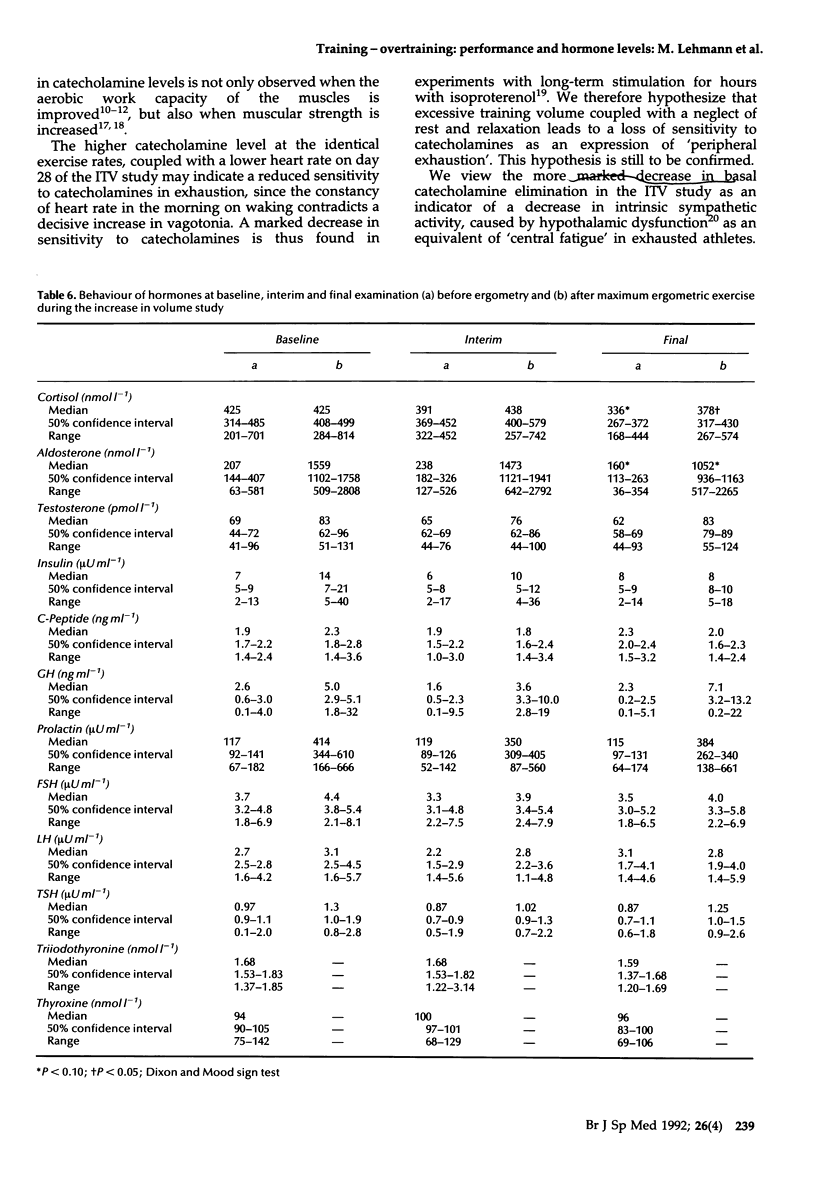
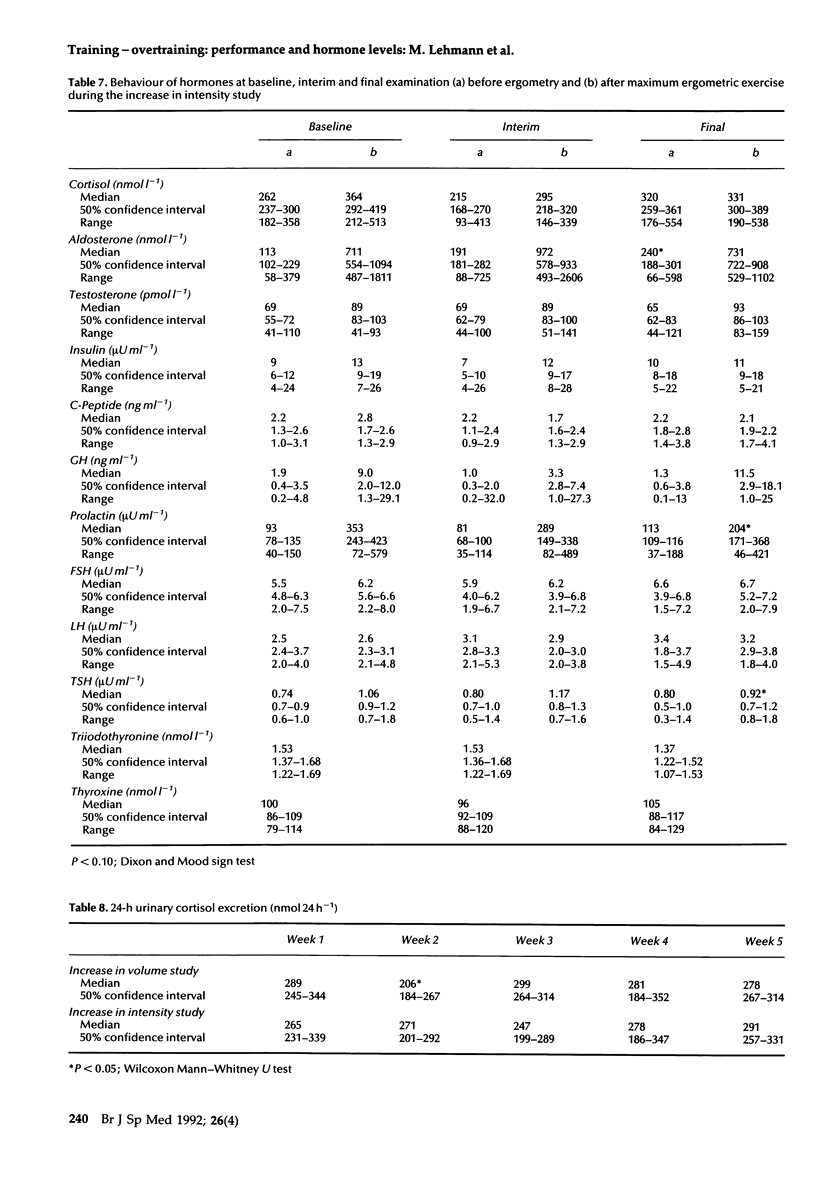
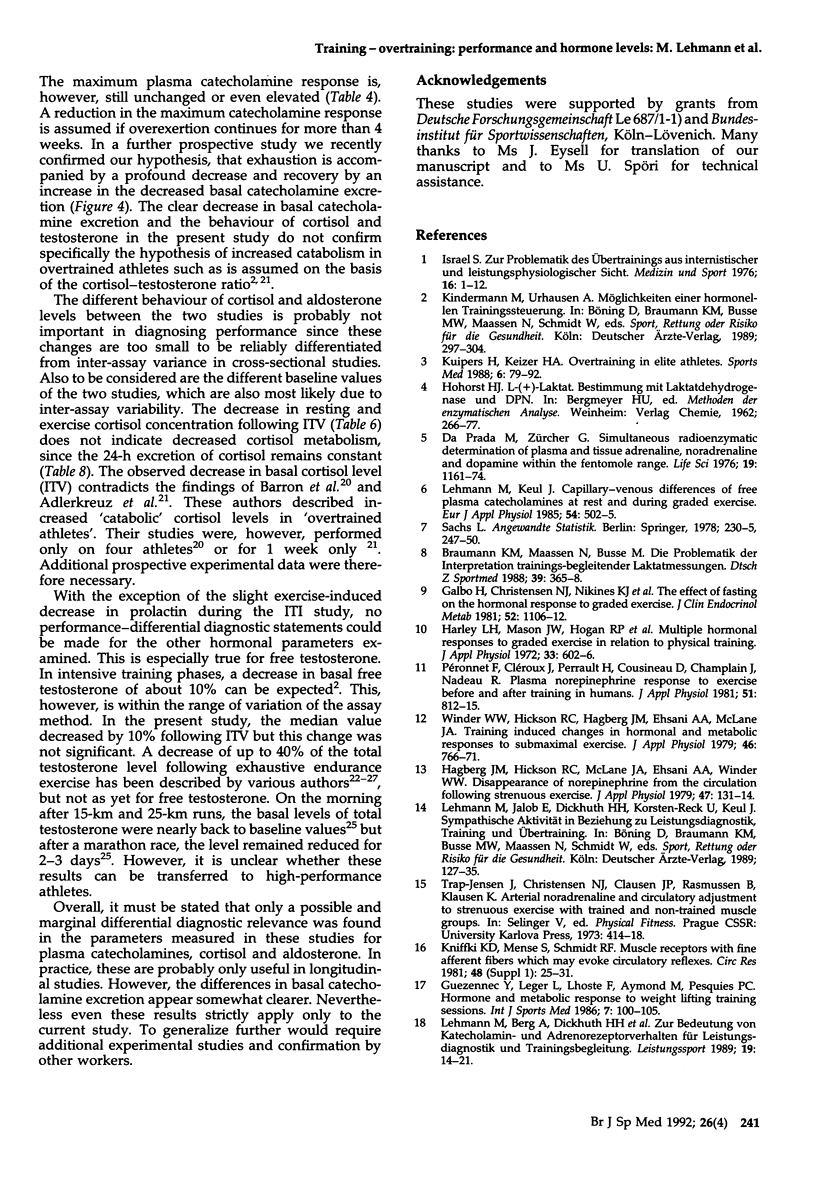
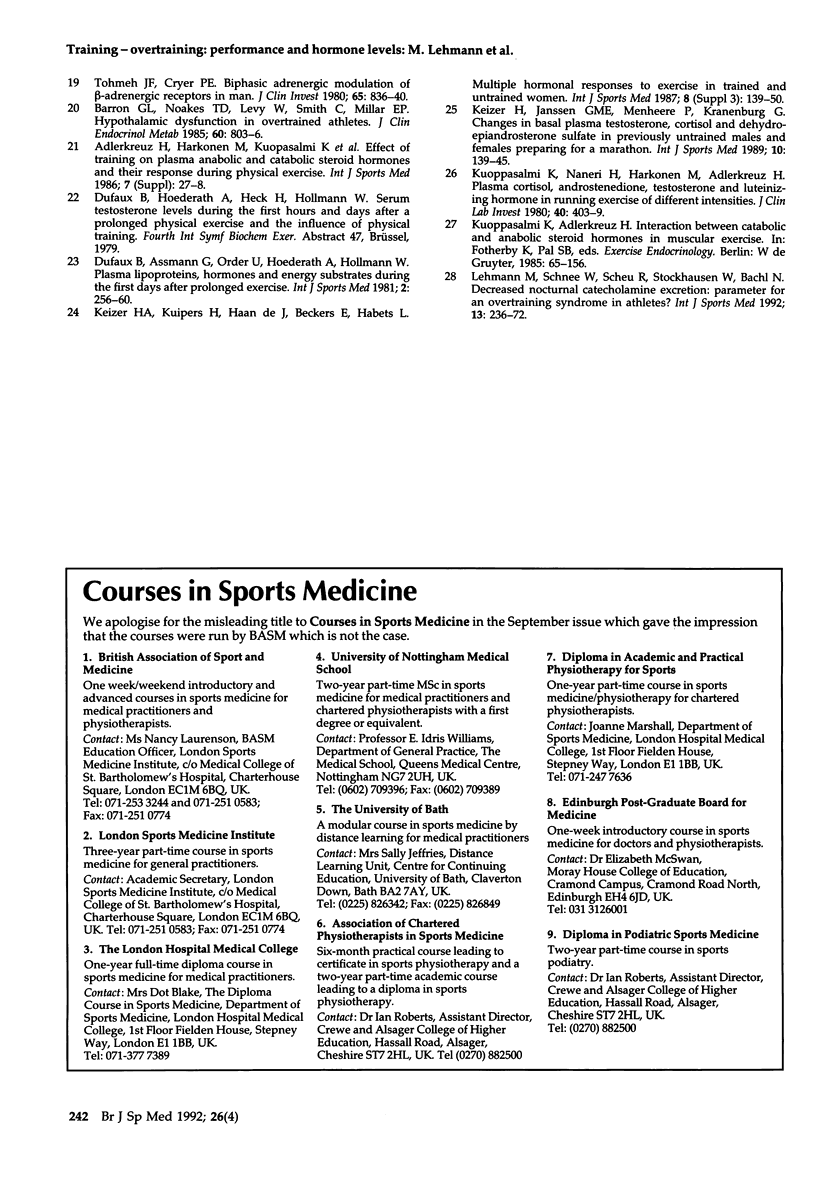
Selected References
These references are in PubMed. This may not be the complete list of references from this article.
- Adlercreutz H., Härkönen M., Kuoppasalmi K., Näveri H., Huhtaniemi I., Tikkanen H., Remes K., Dessypris A., Karvonen J. Effect of training on plasma anabolic and catabolic steroid hormones and their response during physical exercise. Int J Sports Med. 1986 Jun;7 (Suppl 1):27–28. doi: 10.1055/s-2008-1025798. [DOI] [PubMed] [Google Scholar]
- Barron J. L., Noakes T. D., Levy W., Smith C., Millar R. P. Hypothalamic dysfunction in overtrained athletes. J Clin Endocrinol Metab. 1985 Apr;60(4):803–806. doi: 10.1210/jcem-60-4-803. [DOI] [PubMed] [Google Scholar]
- Da Prada M., Zürcher Simultaneous radioenzymatic determination of plasma and tissue adrenaline, noradrenaline and dopamine within the femtomole range. Life Sci. 1976 Oct 15;19(8):1161–1174. doi: 10.1016/0024-3205(76)90251-4. [DOI] [PubMed] [Google Scholar]
- Galbo H., Christensen N. J., Mikines K. J., Sonne B., Hilsted J., Hagen C., Fahrenkrug J. The effect of fasting on the hormonal response to graded exercise. J Clin Endocrinol Metab. 1981 Jun;52(6):1106–1112. doi: 10.1210/jcem-52-6-1106. [DOI] [PubMed] [Google Scholar]
- Guezennec Y., Leger L., Lhoste F., Aymonod M., Pesquies P. C. Hormone and metabolite response to weight-lifting training sessions. Int J Sports Med. 1986 Apr;7(2):100–105. doi: 10.1055/s-2008-1025742. [DOI] [PubMed] [Google Scholar]
- Hartley L. H., Mason J. W., Hogan R. P., Jones L. G., Kotchen T. A., Mougey E. H., Wherry F. E., Pennington L. L., Ricketts P. T. Multiple hormonal responses to graded exercise in relation to physical training. J Appl Physiol. 1972 Nov;33(5):602–606. doi: 10.1152/jappl.1972.33.5.602. [DOI] [PubMed] [Google Scholar]
- Keizer H. A., Kuipers H., de Haan J., Beckers E., Habets L. Multiple hormonal responses to physical exercise in eumenorrheic trained and untrained women. Int J Sports Med. 1987 Dec;8 (Suppl 3):139–150. doi: 10.1055/s-2008-1025720. [DOI] [PubMed] [Google Scholar]
- Kuipers H., Keizer H. A. Overtraining in elite athletes. Review and directions for the future. Sports Med. 1988 Aug;6(2):79–92. doi: 10.2165/00007256-198806020-00003. [DOI] [PubMed] [Google Scholar]
- Kuoppasalmi K., Näveri H., Härkönen M., Adlercreutz H. Plasma cortisol, androstenedione, testosterone and luteinizing hormone in running exercise of different intensities. Scand J Clin Lab Invest. 1980 Sep;40(5):403–409. doi: 10.3109/00365518009101862. [DOI] [PubMed] [Google Scholar]
- Lehmann M., Keul J. Capillary-venous differences of free plasma catecholamines at rest and during graded exercise. Eur J Appl Physiol Occup Physiol. 1985;54(5):502–505. doi: 10.1007/BF00422960. [DOI] [PubMed] [Google Scholar]
- Lehmann M., Schnee W., Scheu R., Stockhausen W., Bachl N. Decreased nocturnal catecholamine excretion: parameter for an overtraining syndrome in athletes? Int J Sports Med. 1992 Apr;13(3):236–242. doi: 10.1055/s-2007-1021260. [DOI] [PubMed] [Google Scholar]
- Murray P. A., Vatner S. F. Reduction of maximal coronary vasodilator capacity in conscious dogs with severe right ventricular hypertrophy. Circ Res. 1981 Jan;48(1):25–33. doi: 10.1161/01.res.48.1.25. [DOI] [PubMed] [Google Scholar]
- Péronnet F., Cléroux J., Perrault H., Cousineau D., de Champlain J., Nadeau R. Plasma norepinephrine response to exercise before and after training in humans. J Appl Physiol Respir Environ Exerc Physiol. 1981 Oct;51(4):812–815. doi: 10.1152/jappl.1981.51.4.812. [DOI] [PubMed] [Google Scholar]
- Tohmeh J. F., Cryer P. E. Biphasic adrenergic modulation of beta-adrenergic receptors in man. Agonist-induced early increment and late decrement in beta-adrenergic receptor number. J Clin Invest. 1980 Apr;65(4):836–840. doi: 10.1172/JCI109735. [DOI] [PMC free article] [PubMed] [Google Scholar]
- Urhausen A., Kindermann W. One- and two-dimensional echocardiography in body builders and endurance-trained subjects. Int J Sports Med. 1989 Apr;10(2):139–144. doi: 10.1055/s-2007-1024891. [DOI] [PubMed] [Google Scholar]
- Winder W. W., Hickson R. C., Hagberg J. M., Ehsani A. A., McLane J. A. Training-induced changes in hormonal and metabolic responses to submaximal exercise. J Appl Physiol Respir Environ Exerc Physiol. 1979 Apr;46(4):766–771. doi: 10.1152/jappl.1979.46.4.766. [DOI] [PubMed] [Google Scholar]


